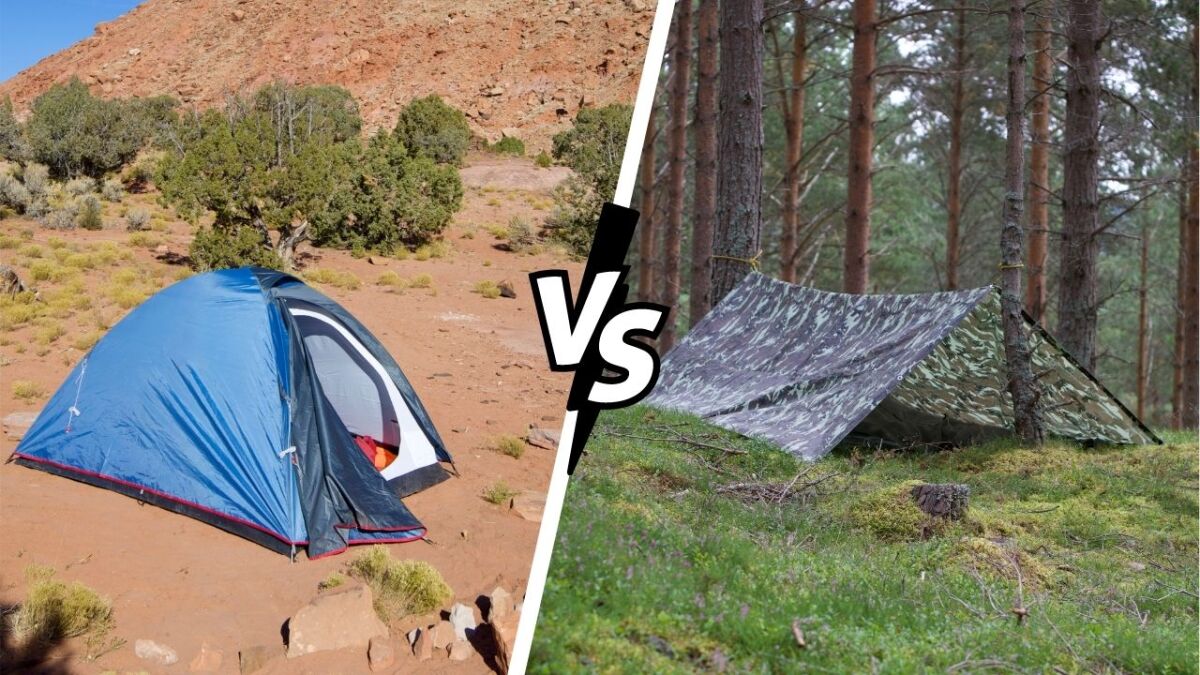
Tarp or Tent? Which is better? - A list of pros and cons (+Survey results)
👉 The key facts from this guide
- Zelt offers faster setup, better protection and privacy, but is more expensive and heavier
- Tarp is versatile, light, inexpensive and allows for better visibility, but less protection and privacy
- Tarps are better for survival situations, but require more practice and experience
- Tents are better suited for beginners and casual campers
- The choice depends on personal preferences, comfort and weight considerations
- Both options have their advantages and disadvantages, it is important to make the right choice for your needs
Tent or tarp?
Which one is better?
What are the advantages and disadvantages of each product?
Do they have the same quality? Which one is cheaper to purchase? Which one provides more protection?
Don't worry, I will guide you through the advantages and disadvantages of tent and tarp.
I have been camping extensively and slept under a tarp for a long time.
Here are my thoughts on this topic.
What does the community say?
I have conducted some surveys because I wanted to know what is most popular among outdoor enthusiasts. Is it the tarp or the tent? Take a look, these are the results:
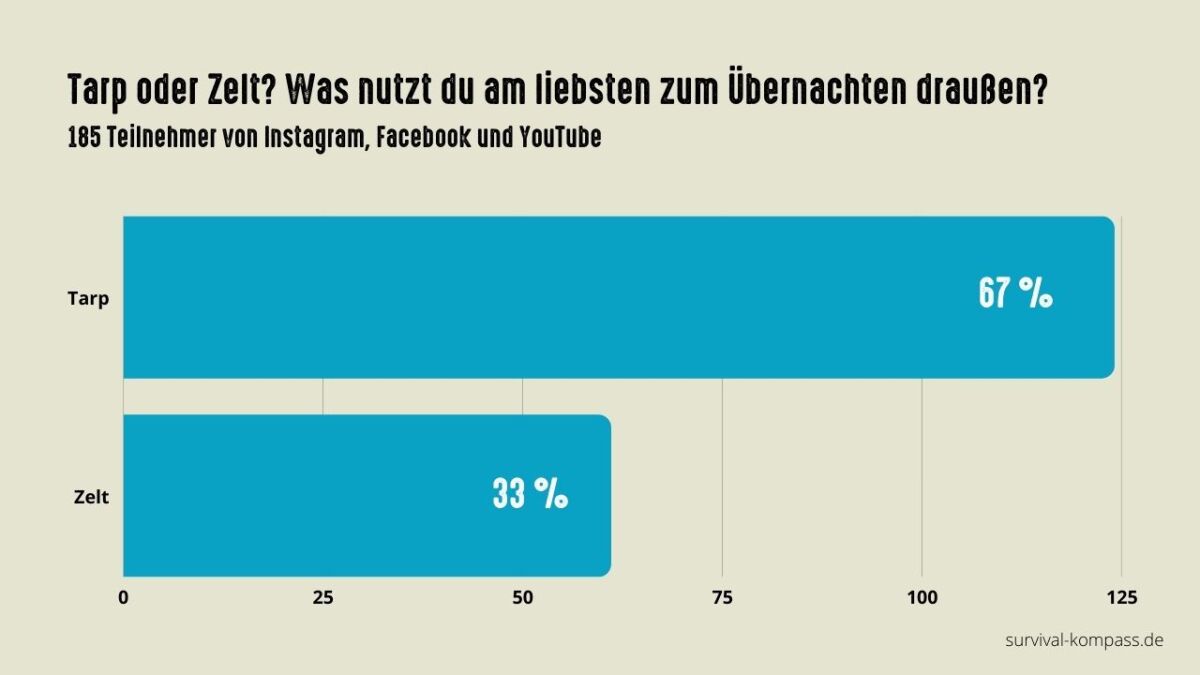
The advantages and disadvantages of a tent
Advantages of the tent
Quick to set up: There are tarp setups that provide as much protection as a tent, but you have to add some branches, leaves, etc. In other words, it takes a long time to have a good shelter. On the other hand, a good tent can be set up in a few minutes.
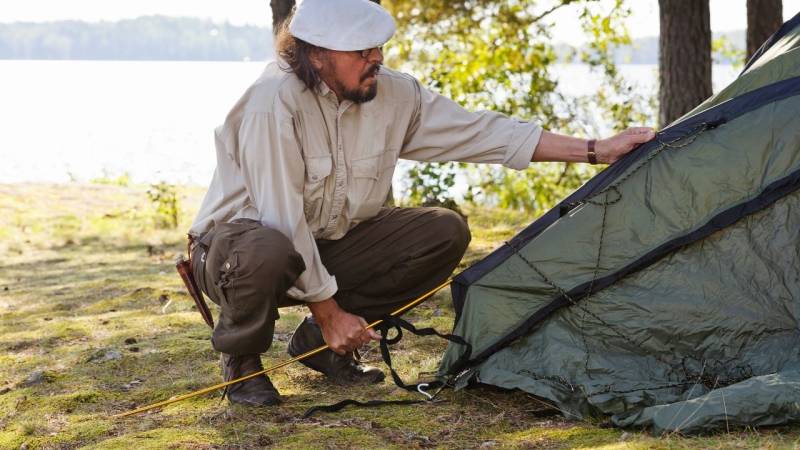
You don't need anything to set up your tent on it: Many tents are completely freestanding. Trees or trekking poles to attach guy lines are not required. You don't even need soft ground to drive in pegs. You can set up your camp right in the middle of a concrete parking lot if you like. Of course, this depends on the type of tent you own. Some are not freestanding and require poles for setup. I prefer freestanding tents because you can set them up anywhere.
Better Protection: There are many different ways to set up a tarp, but none of them are as good as the all-around protection that a (quality) tent provides. A good waterproof tent protects you from all sides. Since tarps are always partially open, rain can blow in and soak the ground, possibly making you wet. Fully enclosed tents also block the wind in all directions. This helps you stay warmer. However, with the right campsite or a large tarp, you can also stay mostly dry.
Tents keep you warmer: Even though the walls are thin, tents provide some insulation. The enclosed space traps some heat to keep you warmer on cold nights. Tarps, which are outdoors, do not retain any heat. This means that when camping with a tent, you can get by with a slightly lighter sleeping bag and still stay just as warm.
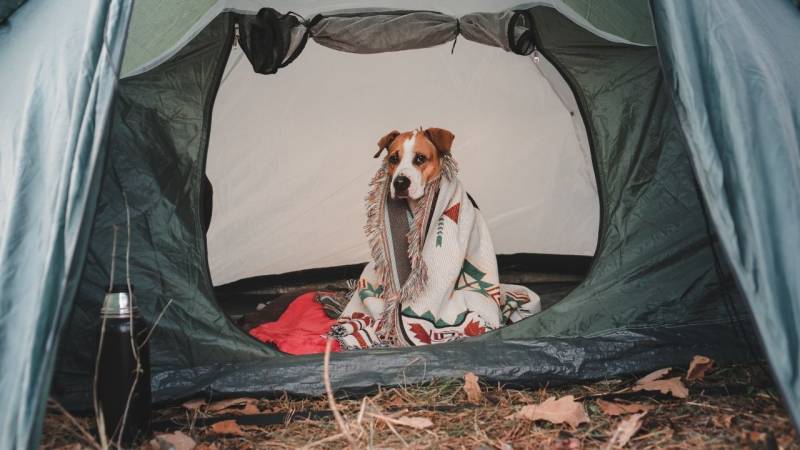
Protection against large animals: A thin nylon tent will not stop a bear, of course. However, a tent provides a psychological barrier against animals. You may have heard stories of campers who heard bears sniffing around their tents but did not enter. An open shelter made of a tarp does not provide this protection.
Protection against small animals: Tents generally have a built-in insect net or all-around protection to keep mosquitoes, ticks, snails, spiders, ants, mice, snakes, and other creatures out. Open tarps do not provide this protection. The solution is to use an insect net or bivvy bag in addition to your tarp to prevent creatures from biting, stinging, or disturbing you at night.
Don't learn new skills to go camping: Most people learned how to camp in a tent as a child. And many tents are easy to set up - just read the included instructions. Tarps, on the other hand, require some skill to set up properly. You have to learn how to tie and tension the ropes correctly. This requires learning some knots. The process is partially more complicated.
Tents offer more privacy: With a tent, you have your own little space away from people. In your tent, you can change clothes, organize your equipment, relax, and simply get away from people for a while. That's one of the reasons why I always pack a tent when traveling internationally.
Tents provide more security: When camping at a campsite you lock your belongings in your tent and don't have to worry as much about theft. You can even attach a lock to your tent door, so anyone who wants to get in has to cut open your tent. While it's possible for someone to steal equipment from your tent, it's less likely. With a tarp, your equipment is simply out in the open and visible to everyone. You shouldn't really leave your equipment unattended because of the risk of theft.
Tents can have a similar weight to tarps: If you are not limited by your budget, ultralight trekking tents are available that are comparable in weight to a combination of tarp and bivouac. It is possible to find a tent weighing approximately 700 grams. A cuben tarp (18 g/m²) and a bivy are lighter, but not much more.
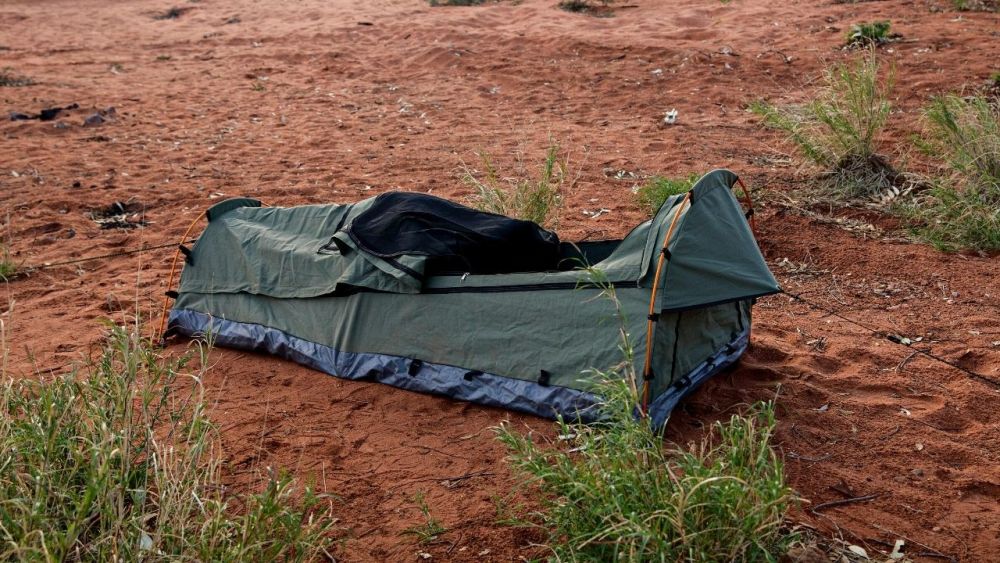
Disadvantages of the tent
Expensive: Good and lightweight tents can become expensive - especially those for extreme weather conditions, like snow. And it doesn't make sense to buy a tent if you don't buy a quality tent that can withstand rain, wind, and other harsh outdoor conditions (here's my tent buying guide).
Tents are fragile: Tents have zippers and poles that can break. They have floors that can get holes if you don't use a groundsheet. Tarps are much more durable.
Bulky: There are many great lightweight tents, but none of them are as compact as a lightweight tarp. Additionally, tents serve no other survival purpose, so they take up a lot of space in your Bug-Out-Bag.
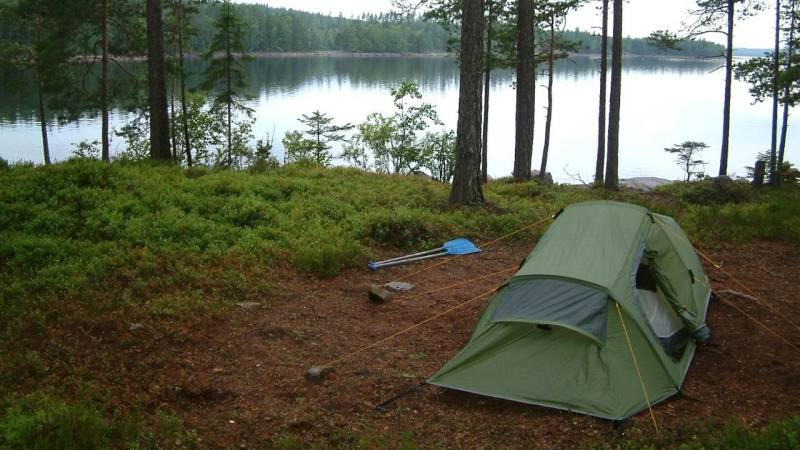
Condensation is a problem in tents: Some tents offer poor ventilation and allow condensation to accumulate inside. This condensation can come from both your breath and the environment. If the condensation is bad enough, you may wake up in a wet sleeping bag. Tarps allow air to flow at all times, keeping you dry. If you sleep in a bivy under your tarp, condensation is naturally a concern again.
Tents are heavier than tarps: An average tent weighs 2 to 3 kg. An ultralight tent weighs about 1 - 1.5 kg. That is still about twice as heavy as the heaviest tarp. Tents require poles and use much more material, which increases the weight. If you are looking for the lightest camping setup possible, stick with a tarp.
Tents offer poor visibility: When you're inside your tent, you'll probably only see what's in front of your door. That's frustrating if you want to gaze at the stars or enjoy a picturesque campsite. If you hear a person or animal approaching your spot, you have to leave your tent to get a look. With a tarp, you can always see through the gap between the ground and the bottom of your tarp.
Tents get hot: When the sun hits your tent in the morning, it's time to get up. Tents act like an oven. They trap heat. Tarps keep you cool by providing shade and allowing a breeze to pass through.
Tents are only allowed on campsites: Unfortunately, in Germany, you are not allowed to simply set up your tent in the forest. However, with a tarp, it's a different story - that's because it's a gray area, as it is not clearly regulated by law.
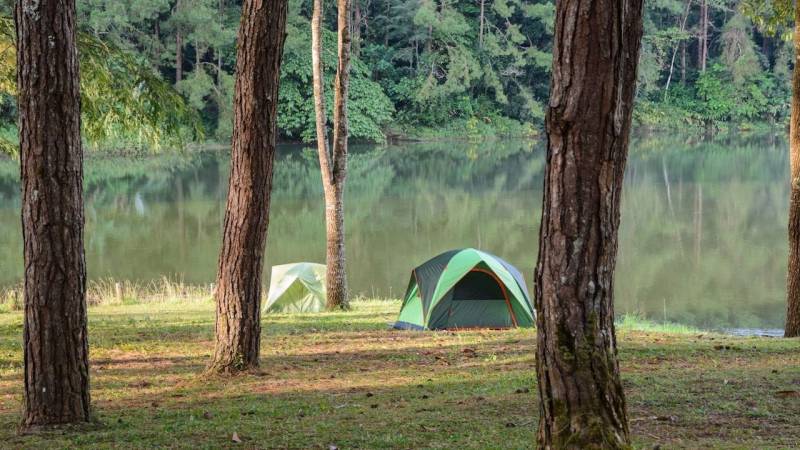
The advantages and disadvantages of a tarp
Advantages of the Tarp
Versatile: There are many survival purposes for a tarp, ranging from collecting rainwater to building animal traps. You can use it as a groundsheet to sit on when the ground is wet. You set it up to block the wind or create a shady spot to rest during the day. The poles you use to set up your tarp can also be your trekking poles. Some tarps even serve as rain ponchos. When you're limited on the number of items you can take in your backpack, versatility is really important.
Tarps are more durable than tents: You don't have to worry about zippers getting stuck or poles breaking. There is no floor that you can tear a hole in. The worst thing that can happen to your tarp is a tear, which you can repair with patches and sewing tools (or duct tape). You can stuff your tarp into a stuff sack and compress it without worrying about it getting damaged, like you would with a tent.
Making a fire: I find the advantage brilliant because tents are enclosed structures, and you cannot make a fire inside a tent. Even near the door, it is not possible with a tent. In contrast, with some tarp setups, you can make a fire in front of or even below the tarp to keep warm. With proper installation, your tarp reflects the heat from the fire to keep you warm.
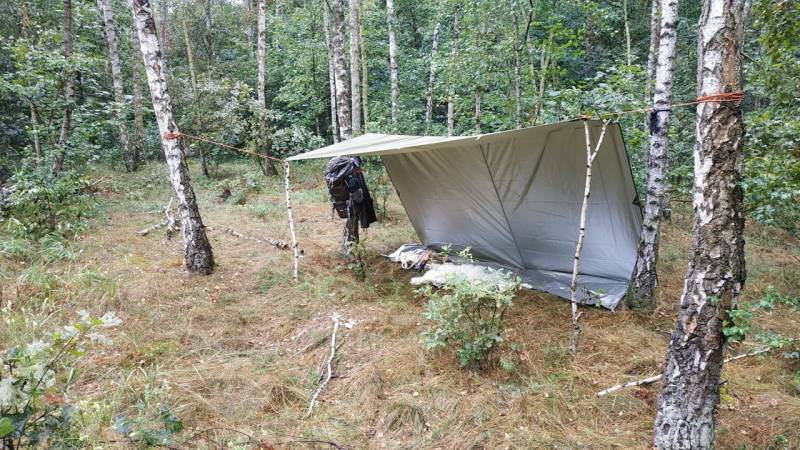
Lightweight and compact: For one person, a tarp should be at least 2 × 3 meters or 3 × 3 meters in size. For multiple people, you should consider at least 3 × 4 meters. Even a larger tarp than this is still more compact and lighter than a tent. Ultralight tarps weigh 140 grams, sometimes even 76 grams (just the tarp without guy lines, etc.).
Less condensation: Since tarps are open, they allow for more airflow. This prevents the formation of condensation. Condensation can be a dangerous issue while camping. In damp conditions, you can wake up in a soaked sleeping bag if your shelter doesn't provide enough air circulation. Wet sleeping bags lose their warmth. This is especially true for down sleeping bags.
Tarps can be packed tiny: Since they don't have a floor, insect netting, or zippers, tarps take up very little volume in your backpack. An ultralight tarp can be packed smaller than an apple. Even a large tarp takes up less than a liter of space. My ultralight tent takes up twice as much volume as my tarp.
Cheap: If you have a tight budget, you can go to the local hardware store and buy a cheap tarp, some string, and a few stakes to set up a lightweight, waterproof camping setup for less than 20 euros. While cheap department store tents are available, they are incredibly bulky and heavy. For campers on a tight budget, tarps offer an affordable, lightweight option.
Tarps are legal: In Germany, you are not allowed to simply set up a tent anywhere. However, sleeping with a tarp in the forest is a gray area. Granted, this is a kind of loophole. However, it could prove useful if you wild camp or camp in an urban area. Read more about the topic "Is Bushcraft in Germany legal?" here.
Better visibility: This depends on your location and setup, but in general, tarps allow for a 360-degree view through the gap between the bottom of the tarp and the ground. This way, you can see if someone or something is approaching you.
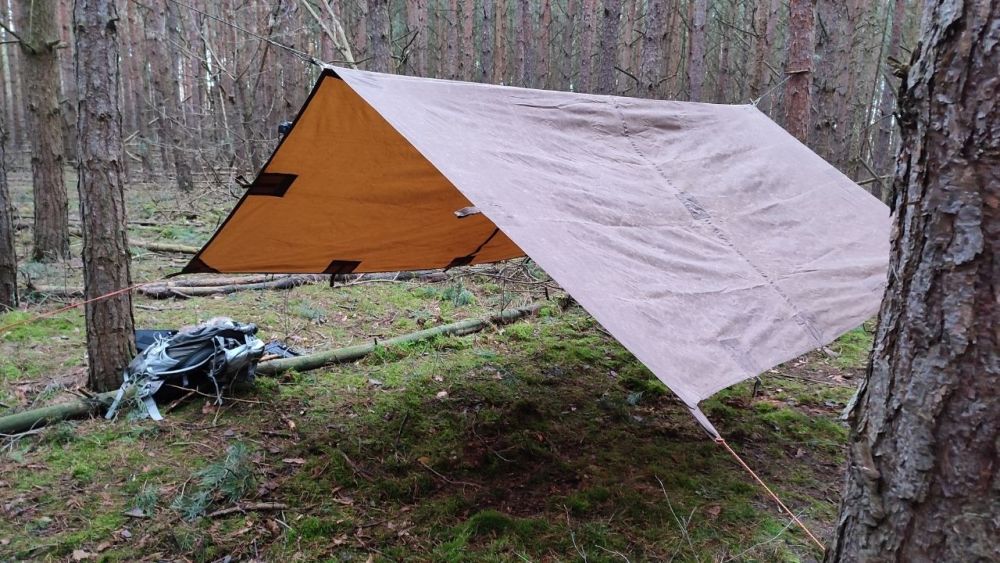
More freedom of movement: Since a tarp often has no walls, I can move easily and have more freedom. This makes getting in and out much easier.
Tarps keep you cooler: This is great for camping in a hot climate or during the summer. In a tarp, you will feel the light breeze, which provides cooling. Tents heat up like an oven, especially in the evening and when the sun rises in the morning.
As a hammock: If you know the tricks, you can use a tarp as a hammock. This keeps you off the cold ground and away from some pesky critters.
Easy cleaning: Tarps are easier to clean than tents. To clean a tarp, simply spread it out and wipe it down.
Easier to repair: Since I always have some duct tape with me, I can repair my tarp at any time. A broken zipper at the tent entrance can ruin your entire weekend.
Tarps allow you to get closer to nature: Essentially, when you camp with a tarp, you are sleeping outside. In a tent, you are confined to a small space where you cannot see outside.
Tarp camping feels more adventurous: Being more exposed to nature, camping under a tarp feels like an adventure.
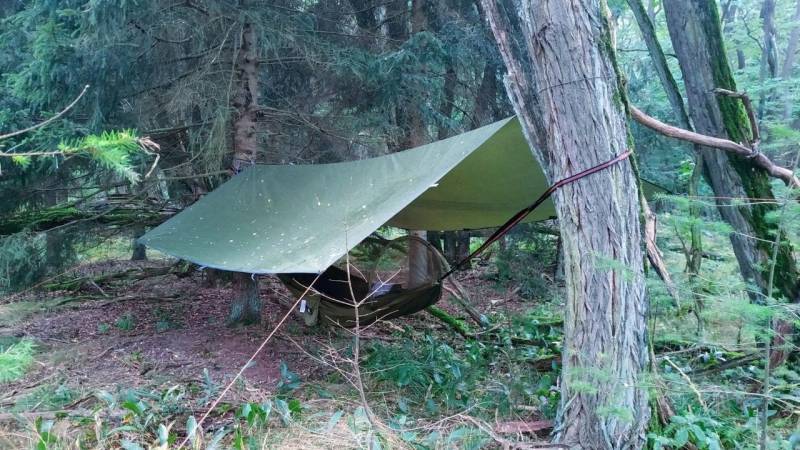
Disadvantages of the Tarp
Bugs and Insects: The bugs and spiders don't bother me as much anymore, but rolling over snails at night is definitely not pleasant. And once I forgot my mosquito repellent in the summer - I couldn't sleep a wink all night. Yes, insects can certainly become a problem.
No insulating ground: If your tarp is large enough, you can choose to set it up so that it covers the ground. But even with this setup, you will still be on the ground. If it's wet, you will feel it on your body. There is also a promising chance that your sleeping bag will get wet, which can lead to hypothermia.
Tarps don't keep you as warm: Since they are open, tarps don't trap heat and provide no insulation. This can be an issue when camping in cold weather.
More practice required: You can take a close look at many tarp setups in my guide, but you still have to practice and test them yourself a few times. Going out into the wilderness is a whole different story, especially when you set up your tarp in the rain on a cool day.
Every time you set up your tarp, you have to adapt to the environment. The ideal tarp location depends on the terrain of your campsite and the weather. It might be raining on the first night, and you set up your tarp under a row of trees. On the next night, you settle in a windy field.
Every time you set up your tarp, you have to adjust your guy lines and find the best pitch. That takes time. Especially if you're just learning. Most small tents can be set up in less than five minutes and the setup is the same every time.
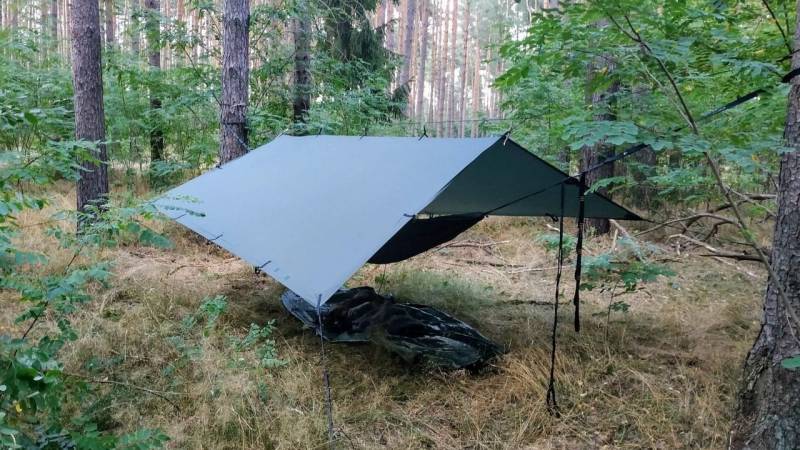
Tarps are not freestanding: This is one of the biggest disadvantages for me. You need something to tie your tarp to. This can be trekking poles or trees. A freestanding tent can be set up on any flat piece of ground.
Less privacy: Since a tarp is not completely closed, people can almost always see inside. This makes staying at a campsite somewhat inconvenient. It's nice to have some privacy for changing, sleeping, organizing equipment, etc. Some types of tarp setups offer a little privacy, but not as much as a fully enclosed tent.
A tarp setup can weigh as much as a tent: When you consider the additional weight of a bivy sack or insect net, as well as stakes, ropes, and a trekking pole, the total weight can be comparable to that of an ultralight tent. You may also need to use a slightly warmer sleeping bag with a tarp, which overall weighs more.
Tarps don't keep you as dry as tents: In a heavy storm, you can get wet. Rain can blow into the sides under the tarp. Eventually, the ground gets wet and you get wet. To stay dry, you should combine your tarp with a waterproof bivvy bag. It keeps water from seeping into your sleeping bag. Tents that are fully sealed keep you dry under all conditions. Read here how to stay safe in your tent in a winter storm.
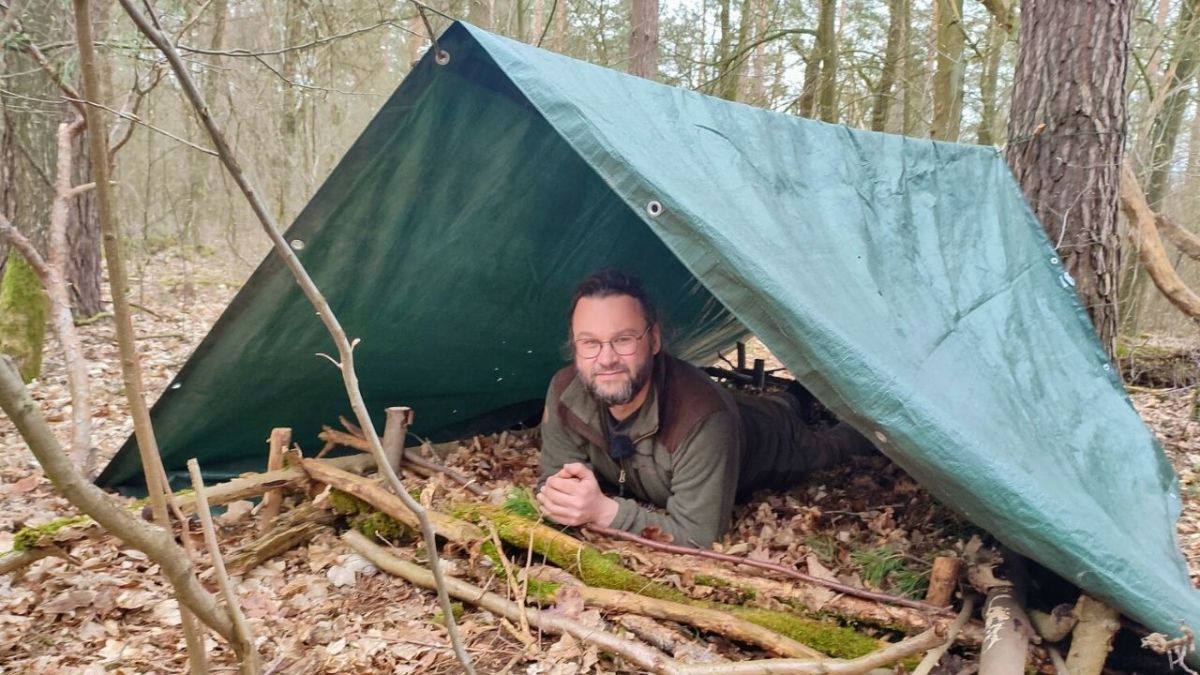
Tarps are more difficult to set up in the dark: Since you have to find trees to tie and adjust your guy lines to, setting up a tarp at night can be a challenge. Tents are always set up exactly the same way, which significantly facilitates setting up camp in the dark.
Tarps are less secure than tents: Since a tarp is open, people can see you and your equipment inside. In a tent, it is not noticeable whether it is occupied or not. It is less likely for someone to peek inside and steal something.
Tarps are not suitable for winter camping: They cannot handle the snow load that a 4-season tent is designed for. Tarps also do not provide insulation to help keep you warm, like with a wood stove tent.
Read also
Your Bushcraft Backpack: What is the Optimal Weight? How Much Can a Packed Backpack Weigh? – Learn what weight is ideal for a bushcraft backpack so you can comfortably travel with the necessary equipment in nature. What is the Optimal Weight?
Learn to build survival shelters from natural materials
It's great to plan ahead and have a tarp or tent in your backpack.
But what if your backpack gets lost or stolen?
No equipment can compensate for your knowledge, which is why it is important to learn how to create a shelter without any equipment.
So start practicing how to build leaf shelters and snow shelters. You can never be too prepared in that regard.
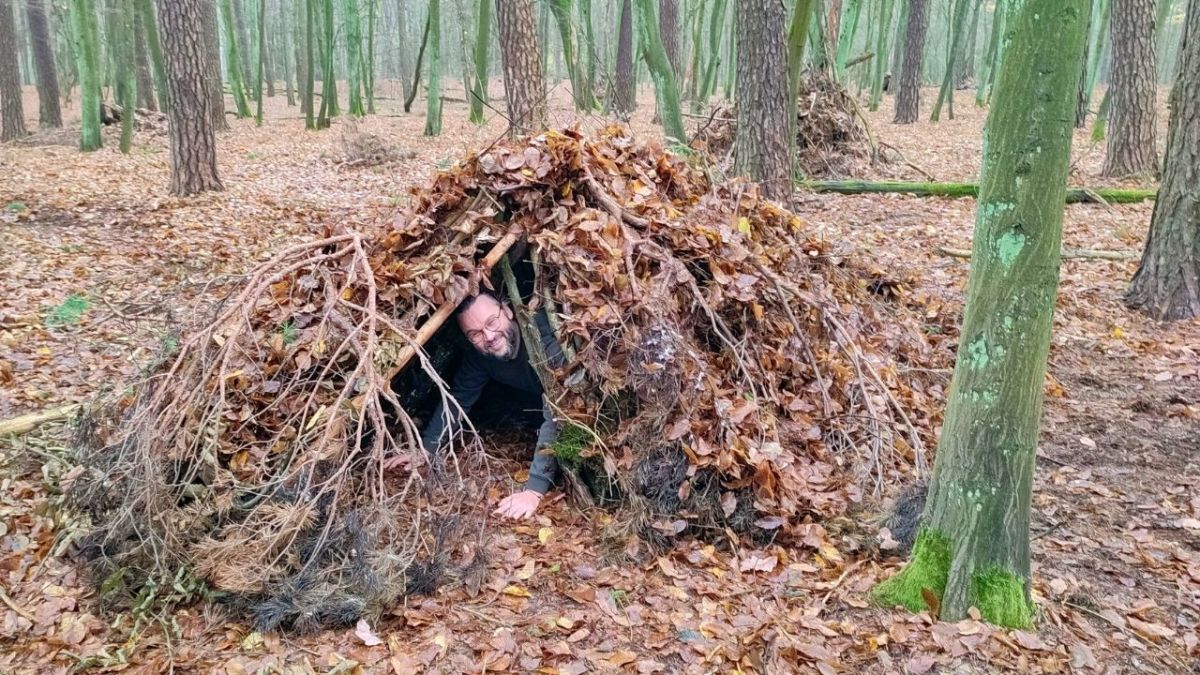
My stance on the "Tent or Tarp?" debate
For survival situations, tarps are definitely better than tents. However, choosing a tarp for your shelter only makes sense if you know how to use it.
That not only means knowing how to set up the tarp - you also have to pay special attention to the condition of the ground and the location. You must never get wet, as this can lead to hypothermia.
Tarps are definitely not for beginners.
If you are new to Survival, find an expert or practice it often enough until you truly master the different setups for various situations.
Even if you are familiar with the use of tarps for shelter, it doesn't mean you have to decide on one.
Especially for beginners, a tent is the best choice. If you are sleeping in the forest for the first time or camping in low temperatures, then I clearly recommend a tent.
Even in rainy weather or if you're not yet familiar with insects, it's better to grab a tent first.
I still prefer a tent in most situations. It is often faster and easier to set up. Tents also provide slightly better protection from the elements. I find them more comfortable.
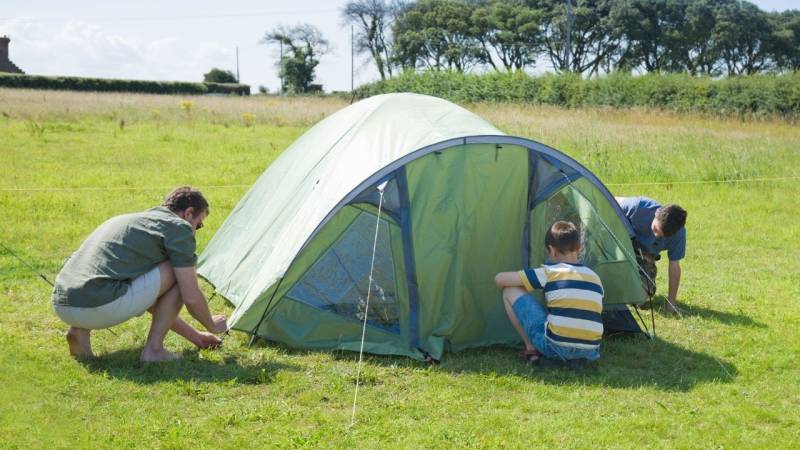
Of course, all of this comes at the expense of a little more weight. My ultralight tent (1.6 kg) weighs approximately 1 kg more than my lightweight bivouac/tarp combination (about 600 g).
I will continue to use my tarp for shorter trips, where I place more value on bushcraft and weight. Currently, I will continue to use and experiment with both types.
Final Thoughts: Tarp Vs. Tent
At the end of the day, the choice really depends on your personal preferences.
If your top priority is a lightweight sleeping system, a tarp (here's my top list) is the best option.
You can reduce your entire accommodation to less than 300 g (cuben tarp with mosquito net, guy lines, and stakes) and even to 500 grams if you also buy a bivy.
The 500 grams is half the weight of an ultralight tent. If you have a limited budget, you can get a tarp from a hardware store and a simple bivy, and your lightweight shelter will be made for less than a quarter of the cost of an ultralight tent, to start with. Or you go for a combo between hammock and tent: the Haven Tent.
If, however, you value comfort and privacy and don't mind carrying an extra kilo, a tent is still the best option for camping accommodation.
There is a reason why tents are so popular: they are usually uncomplicated and quick to set up. For the occasional camper, a tent is probably the best choice.
What is your stance on the Tarp vs. Tent debate? Which do you prefer and why?
Please let me know in the comments.


Author of the guide
Martin Gebhardt
Hey, I'm Martin. On my blog, you will learn the basics and numerous details about living in the wild. I think survival, bushcraft and the good life in nature are the keys to happiness. Find me here on Instagram or on YouTube. You can find more about my mission on the About Me page.
Was this guide helpful?
30 people found this guide helpful.
5.00 out of 5 points (30 Ratings)
Comments (2)
This post may contain affiliate links. So if you click on the links and make a purchase, I will receive a small commission at no additional cost to you. Click here, to learn more about it.


